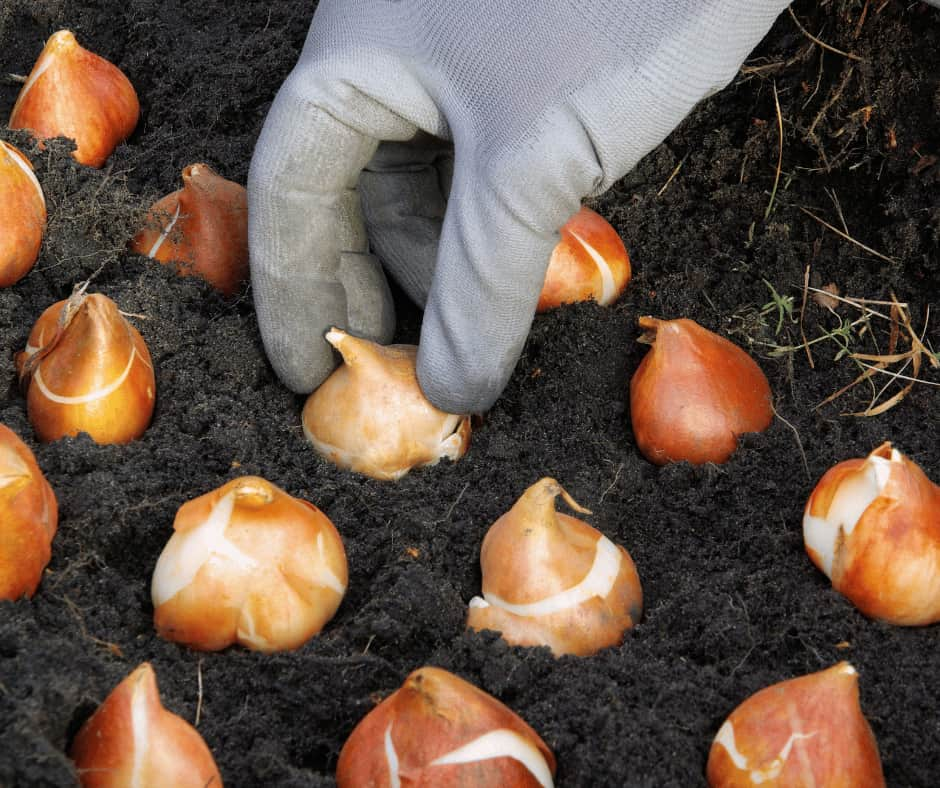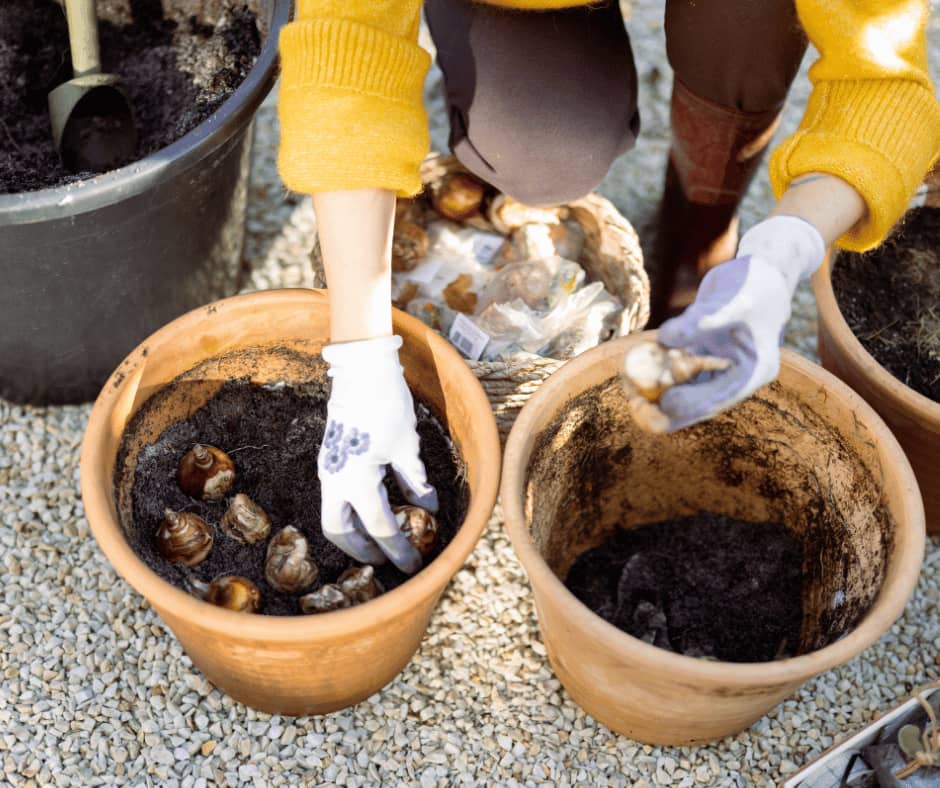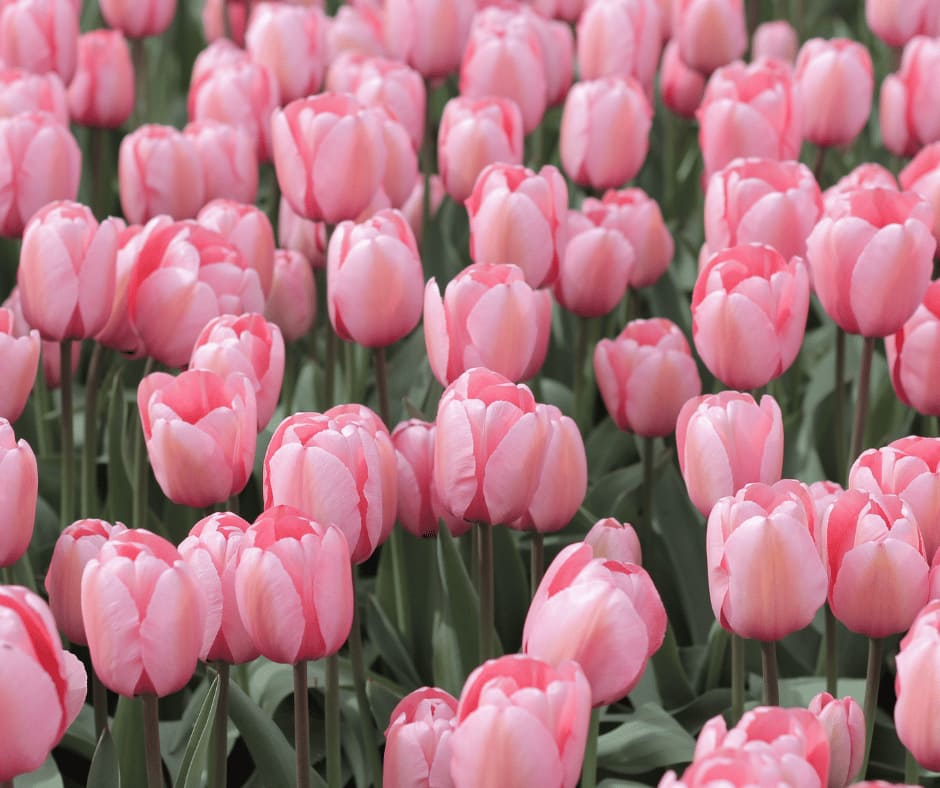In Melbourne’s diverse gardens, tulips have become a symbol of beauty and resilience, thriving in the unique climate of this bustling metropolis. As we embark on this guide, we’ll explore the secrets to nurturing these beloved flowers, making every Melbourne garden a canvas for their spectacular display.
Join us as we delve into the art and science of growing tulips in Melbourne. Whether you’re a seasoned gardener or just starting out, this guide is designed to help you successfully cultivate these stunning flowers, adding a touch of elegance to your outdoor space. Let’s begin our journey into tulips, where every bloom tells a story of growth, adaptation, and natural splendour.
Understanding Melbourne’s climate for growing tulips
Melbourne’s climate, classified as ‘cool temperate,’ presents a unique set of conditions crucial for tulip cultivation. Understanding these conditions is key to ensuring your garden’s healthy growth and vibrant blooms of tulips.
When assessing Melbourne’s climate, there are 3 things you need to consider:
- Cool temperate climate: Characterised by mild to warm summers and cool winters, this climate is generally conducive to tulip growth.
- Winter: The cooler temperatures in winter, essential for the dormancy period of tulip bulbs, prepare them for spring blooming.
- Spring: As the temperature gradually warms up, the tulips break dormancy and start their growth cycle, leading to the flowering stage.
In short, Melbourne’s cool temperate climate, with its distinct seasonal changes, offers a suitable environment for growing tulips. However, gardeners should be mindful of the local microclimates and variable weather patterns to ensure the best care for their tulips. With the right approach, tulips can thrive and bring vibrant beauty to Melbourne gardens.
For more information regarding what to grow in Melbourne, see our comprehensive guide here!
Choosing the right tulip varieties for Melbourne
In Melbourne’s cool temperate climate, choosing the right tulip varieties can significantly impact your gardening success. Some tulip types are well-suited to Melbourne’s unique conditions, ranging from traditional favourites to some unique varieties.
Traditional varieties
- Darwin hybrids: Renowned for their large, vibrant blooms and sturdy stems, Darwin Hybrids are perfect for Melbourne’s climate. They are known for their resilience and long-lasting flowers.
- Triumph tulips: These mid-spring bloomers are known for their wide range of colours and strong stems, making them ideal for Melbourne’s variable spring weather.
- Single late tulips: Offering a wide palette of colours, they bloom in late spring and are known for their classic tulip shape and height, adding elegance to any garden.
Unique varieties
- Parrot tulips: With their fringed and feathery petals, Parrot Tulips are a unique choice that brings a dramatic flair to gardens. They thrive in the cooler and less windy parts of Melbourne.
- Fringed tulips: Known for their crystalline fringed edges, they offer an unusual texture and are quite hardy in fluctuating temperatures.
- Lily-flowered tulips: Their slender and pointed petals resemble a lily. They are particularly striking and fare well in Melbourne’s climate, adding a touch of sophistication.
When selecting tulips for your Melbourne garden, consider these varieties for their adaptability and beauty. Each type offers something special, whether it’s the robustness of Darwin Hybrids or the unique charm of Parrot Tulips.
By choosing the right varieties, you can ensure a splendid tulip display that celebrates the essence of Melbourne’s gardening spirit.
When to plant tulips in Melbourne
The optimal period for planting tulips in Melbourne is during the Autumn months, specifically from late April to early May. This timeframe aligns perfectly with the city’s unique climate, ensuring the tulips undergo the necessary cold period for optimal growth.
Why Autumn? This comes down to 2 core reasons:
- Soil temperature: Planting in autumn allows the bulbs to settle into soil temperatures beginning to cool, which is crucial for their development.
- Winter dormancy: The cooler months of winter provide a necessary dormant period for the bulbs, preparing them for a vibrant bloom in spring.
Preparing the soil for tulip planting
Soil preparation is key to laying the foundation for thriving tulips in Melbourne. The ideal soil for tulips should be fertile, well-draining, and maintain a pH level that is slightly acidic to neutral, typically between 6.0 and 7.0.
When it comes to preparing the soil for tulip planting, we recommend following these simple steps:
- Clear and Clean: Remove weeds, debris, and stones from the planting area.
- Till the Soil: Loosen the soil to a depth of about 12-15 inches to facilitate root growth.
- Mix in Amendments: Add in compost or manure evenly.
- Apply Fertiliser: Use a balanced fertiliser, following package instructions for application rates.
Creating proper drainage for tulip beds or pots
Now, let’s talk about keeping our tulip’s feet dry. Tulips despise wet feet – prolonged moisture can lead to bulb rot, a real party spoiler. Think of creating a raised bed in garden beds as building a stage for the tulips to show off. It ensures the water drains away, keeping the bulbs happy and dry. If the soil feels too dense, a sprinkle of sand or fine gravel can loosen things up, enhancing drainage.
For those who prefer pots, it’s all about the base. Ensure your pots have holes at the bottom, and consider laying a bed of gravel or broken terracotta pieces before adding the soil. This little trick prevents the dirt from clogging up the drainage and keeps the water flowing smoothly.
Choosing the ideal location for tulip planting
Finding the perfect spot for tulips is like scouting a location for a picnic. You need the right amount of sunlight – at least 6 hours of direct light is ideal. Too little sun and our tulips might not show their full glory.
Wind protection is another key factor. Just like we’d shelter our picnic from gusty winds, planting tulips in a protected spot ensures they aren’t battered by the elements. And while tulips enjoy company, they prefer being open. Giving them space to breathe and grow, about 4 to 6 inches apart, should do the trick.
Lastly, consider the microclimates in your garden. Areas near walls, under trees, or slopes can have little climate quirks, affecting your tulips’ growth. It’s like choosing the right spot in the park – some places are just better for that perfect day out.
We’re setting the stage for a spectacular tulip display in our Melbourne gardens by giving thought to soil preparation, drainage, and location. These little details make all the difference in bringing a burst of colour and joy to our outdoor spaces.

How to plant tulips in Melbourne: Step-by-step guide
Planting tulips in Melbourne is like embarking on a delightful gardening adventure. Let’s walk through this journey step by step, ensuring your tulip bulbs are nestled in just right for a spectacular spring show:
- Choose your bulbs: Start with healthy, firm tulip bulbs. Look for ones free from blemishes and feel weighty in your hand.
- Timing is everything: Remember, the ideal time to plant is during the cool autumn months, from late April to early May.
- Select the perfect spot: Find a sunny spot in your garden with at least 6 hours of sunlight. Tulips love the sun!
- Prepare the soil: Work the soil until it’s loose and crumbly. Mix in some compost or well-rotted manure to enrich and ensure it’s well-draining.
- Planting depth and spacing: Dig holes about 3 times the bulb’s height. A general rule of thumb is to plant bulbs about 4 to 6 inches apart. Place the bulb in the hole with the pointy end up.
- Cover and water: Gently cover the bulbs with soil. Give them a good drink of water, but be careful not to overwater.
- Mulch for protection: Add a layer of mulch to keep the soil temperature stable and weeds at bay.
- Wait for Spring: Now, it’s a waiting game. With the right care and patience, your garden will be a tulip wonderland come spring.
Tips for growing tulips in pots or containers

Growing tulips in pots or containers is a fantastic way to enjoy their beauty, especially if space is limited.
Here are some tips to ensure your potted tulips flourish:
- Choosing the right pot: Make sure your pot is deep enough for the tulips, ideally about 12 to 15 inches deep. It should have good drainage holes to prevent waterlogging.
- Use the right soil: Opt for a high-quality potting mix. Tulips in pots thrive in soil that’s fertile and drains well.
- Planting: Plant the bulbs with the pointy end up, about 3 times their height in depth. You can place them closer together in a pot than the ground, but they shouldn’t touch each other.
- Location: Place your pot in a sunny spot where the tulips can bask in at least 6 hours of sunlight daily.
- Watering: Water the soil well after planting. Keep the soil moist but not soggy. Overwatering can lead to bulb rot.
- Aftercare: Once the tulips have bloomed and the flowers have faded, cut back the flower stalks but leave the foliage until it turns yellow and dies back. This process allows the bulb to store energy for the next season.
- Winter care: In Melbourne, you can leave the pot outside during winter, as the cold period benefits the bulbs. Just ensure the pot is not in a spot where it can get waterlogged.
By following these tips, you can enjoy the stunning beauty of tulips on your balcony, patio, or any outdoor space, adding a touch of spring cheer wherever you choose.
Caring for your tulips
Caring for tulips in Melbourne resembles nurturing a delicate yet resilient garden guest. With the right balance of water, nutrients, and sunlight, these blooms can transform your garden into a vibrant canvas of colours.
Providing adequate sunlight and watering
Tulips thrive in full sun, requiring around 6 hours of direct sunlight daily. In Melbourne, where the sun can be quite intense, a spot with morning sunlight and some afternoon shade is ideal.
Meanwhile, the key is to keep the soil moist but not waterlogged when it comes to watering. Water your tulips deeply once a week, allowing the soil to dry out slightly between waterings. During Melbourne’s unpredictable weather, adjust your watering schedule based on rainfall and temperature changes.
Fertilising tulips for healthy growth
In our experience, tulips benefit from a balanced, slow-release fertiliser applied at planting and again as they sprout. Look for a fertiliser with an equal nitrogen, phosphorus, and potassium balance.
A quick note to avoid over-fertilising: Too much nitrogen can encourage leafy growth at the expense of blooms. After blooming, a light application of bulb food can help nourish the bulbs for the next season.
Deadheading and removing spent tulip flowers
Deadheading, or removing spent flowers, is essential to tulip care. It prevents the plant from expending energy on seed production. It encourages the bulb to store energy for the next flowering season.
- When to deadhead: Once the tulip flowers fade and lose their vibrant colour, it’s time to deadhead.
- How to deadhead: Use clean, sharp scissors or secateurs. Cut the flower stems close to the base of the plant, being careful not to damage the leaves.
- Leave the foliage: After deadheading, leave the foliage in place until it turns yellow and dies back naturally. This process allows the plant to photosynthesise and store energy in the bulb.
By following these care tips, your tulips will be well-equipped to showcase their beauty year after year, adding a touch of elegance to your Melbourne garden.

Common problems and solutions for growing tulips
While tulips bring so much joy and colour to our Melbourne gardens, they can sometimes be finicky, facing issues like bulb rot and pesky fungal diseases. But don’t let that deter you! With a few tips and tricks, you can easily navigate these challenges.
Let’s talk about bulb rot first. It’s like the common cold for tulips, usually when their feet are too wet. The trick is to ensure they’re planted in well-draining soil. If you come across a bulb that feels soft or looks off-colour, it’s best to say goodbye to it. Think of it as removing the bad apple before it spoils the bunch.
Now, onto those fungal diseases. Tulip fire is the main culprit, with its telltale spots on leaves and flowers. The key to avoiding this is ensuring your tulips aren’t too crowded and get plenty of air. Also, try to water at the base rather than overhead, keeping those leaves dry. If you spot any signs of disease, it’s time for those affected plants to leave the party early so the rest can thrive.
Pests in tulip plants
Even in the best-kept gardens, uninvited guests can show up. Aphids, slugs, snails, and even rodents might find your tulips as irresistible as you do.
A simple spray of soapy water can be an easy fix for those aphids. It’s like giving the plants a gentle bath to shoo away these tiny gatecrashers.
Slugs and snails prefer a more gourmet approach. They’re not eggshells or diatomaceous earth fans, so sprinkling these around your tulips can help keep them at bay. And if you’re up for it, setting up a little bait trap can also be quite effective.
As for rodents, they’re a bit trickier. They love to snack on bulbs, so consider planting your tulips in a protective wire cage or using some rodent repellent to send them off in search of a different buffet.
Remember, the best defence is a good offence. Regularly check on your tulips for any signs of trouble and act swiftly. You can keep your tulips blooming beautifully with some care and attention, making your Melbourne garden the neighbourhood’s envy.
Harvesting and post-bloom care
After the tulips have put on their spectacular show in your Melbourne garden, you might wonder, “what next?”. The post-bloom period is just as important as the growing season to ensure your tulips are ready to dazzle again next year.
Once the tulip blooms have faded and lost their lustre, it’s time to think about harvesting and care. This phase is about helping the bulbs store energy for the next blooming season.
- Deadheading: Start by removing the spent flowers. This process, known as deadheading, stops the plants from putting energy into seed production. Snip off the faded blooms, but leave the foliage intact.
- Foliage Care: The leaves of the tulip are like solar panels, soaking up the sun and powering the bulbs beneath. Leave the foliage until it turns yellow and wilts. This is the tulip’s way of recharging its batteries – the bulbs – for the next spring.
- Bulb Lifting (Optional): In Melbourne, you can often leave the bulbs in the ground. However, suppose you’re worried about wet or cold winters or want to rearrange your garden. In that case, you can gently lift the bulbs from the soil once the foliage has died. Brush off any excess soil and store them in a cool, dry place, like a paper bag in a garden shed.
- Replanting: It’s time to replant the bulbs when autumn rolls around again. This yearly cycle gives the bulbs a chance to rest and return with vigour for their spring performance.
Remember, tulip care doesn’t end when the blooms fade. With the right post-bloom care, you’re setting the stage for another year of stunning tulips in your Melbourne garden. It’s a cycle of care that rewards you with beauty year after year.
Final thoughts
Growing tulips in the ever-changing Melbourne climate can be both a delightful challenge and a rewarding experience. From selecting the right varieties to mastering the art of planting and care, each step brings its own joy. Remember, the key to vibrant tulips is understanding their needs – proper soil, timely planting, adequate sunlight, and post-bloom care. Embrace these tips, and you’ll transform your garden into a tulip haven, a testament to the beauty and resilience of nature.






